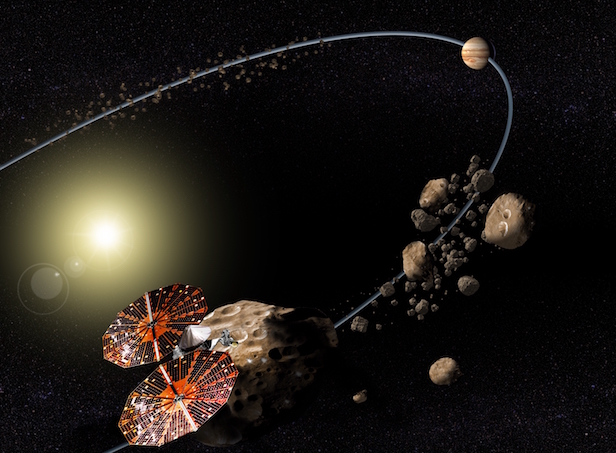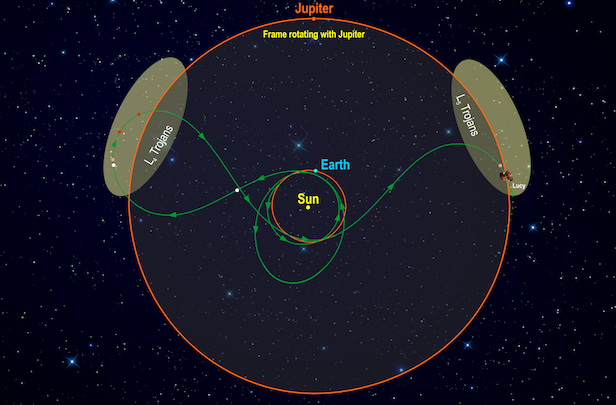Mission to the Trojan asteroids has been given the ‘green light’
NASA’s Lucy mission will visit a collection of asteroids and is due to launch in 2021

The Lucy mission will carefully study seven asteroids, consisting of one Main Belt and six Trojan asteroids. Image credit: NASA/SwRI
NASA’s mission to perform the first reconnaissance of the Trojans, a population of primitive asteroids orbiting in tandem with Jupiter, passed a critical milestone today. NASA has given approval for the implementation and 2021 launch of the Lucy spacecraft.
The confirmation review, formally known as “Key Decision Point C,” authorised continuation of the project into the development phase and set its cost and schedule. The confirmation review panel approved the detailed plans, instrument suite, budget and risk factor analysis for the spacecraft.
The next major mission milestone, the Critical Design Review, will examine the detailed Lucy system design. After a successful critical design review, the project team will assemble the spacecraft and its instruments.
“Up until now this mission has entirely been on paper,” says Lucy Principal Investigator Hal Levison of the Southwest Research Institute at Boulder, Colorado, United States. “Now we have the go ahead to actually cut metal and start putting this spacecraft together.”

The spacecraft’s path (green) is shown in a frame of reference where Jupiter remains stationary, giving the trajectory its pretzel-like shape. Image credit: SwRI
Lucy, the first space mission to study the Trojans, takes its name from the fossilised human ancestor called “Lucy” by her discoverers whose skeleton provided unique insight into humanity’s evolution. Likewise, the Lucy mission will revolutionise our knowledge of planetary origins and the formation of the Solar System.
Lucy is planned for launch October 2021. During its 12-year journey, the spacecraft will visit seven different asteroids – a Main Belt asteroid and six Trojans. The spacecraft and a remote-sensing instrument suite will study the geology, surface composition, and bulk physical properties of these bodies at close range.
“Today’s confirmation of Lucy is a key step towards better understanding the role that small bodies played in the formation of the Solar System and life on Earth,” says Adriana Ocampo, Lucy’s program executive at NASA Headquarters in Washington, DC, United States. “We congratulate the entire team for their hard work.”
Keep up to date with the latest news in All About Space – available every month for just £4.99. Alternatively you can subscribe here for a fraction of the price!




